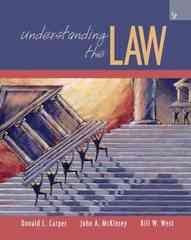
Solve.the the following questions as attached below.this question is complete.
1. McDonald and Ayers 1978 present data from an early study that examined the possible link between air pollution and mortality. (data_table_B15.xlex file summarizes the data). The data description is as follows: MORT = total age-adjusted mortality from all causes, in deaths per 100,000 population. PRECIP = mean annual precipitation . (in inches), EDUC = median number of school years completed for persons of age 25 years or older, NONWHITE = percentage of the 1960 population that is nonwhite NOX = relative pollution potential of oxides of nitrogen SO2 = relative pollution potential of sulfur dioxide. "Relative pollution potential" is the product of the tons emitted per day per square kilometer and a factor correcting the SMSA dimensions and exposure. a. Fit a multiple linear regression model relating the mortality rate to these regressors. b. Test for significance of regression. What conclusions can you draw? c. Use t tests to assess the contribution of each regressor to the model. Discuss your findings. d. Find a 95% CI for the regression coefficient for SO2. e. Run all possible models and choose the best one with justifications. (You may not consider PRESS statistic) f. Run forward, backward and stepwise regression on the data. g. Do all 3 procedures picked the same model? If yes: Should it happen all the time, If NO: Why don't they pick the same? h. Perform the residual analysis of your final model and provide the final estimated model (you must describe the rule you applied).PROBLEMS 11 Consider the National Football League data in Table B.1. a. Fit a multiple linear regression model relating the number of games won to the team's passing yardage (x2), the percentage of rushing plays (x7), and the opponents' yards rushing (x8). b. Construct the analysis-of-variance table and test for significance of regression. c. Calculate t statistics for testing the hypotheses Ho: B2 = 0, Ho: B, = 0, and Ho: B: = 0. What conclusions can you draw about the roles the variables X2, 17, and x8 play in the model? d. Calculate R2 and RAdj for this model. e. Using the partial F test, determine the contribution of x7 to the model. How is this partial F statistic related to the t test for B, calculated in part c above? 3.2 Using the results of Problem 3.1, show numerically that the square of the simple correlation coefficient between the observed values y; and the fitted values y, equals R2. 13 Refer to Problem 3.1. a. Find a 95% CI on B. b. Find a 95% CI on the mean number of games won by a team when *2 = 2300, x7 = 56.0, and X8 = 2100.2. Suppose household preferences are described by the utility function: 1 HOLE) =c +cw'i where C stands for consumption of market goods and 1 stands for leisure. {a} Suppose the market real wage is w and the time endowment is h, and that households have non- market income {i.e. there is no dividend income and taxes]. Show that the household chooses an a 2 optimal level of leisure given by! = (3) . [2] [Hint: Use the optimality condition that the MRS\"; = % = w] E [b] Based on household's optimal choice of leisure hours, what will be the household labor supply? [2] [Hint: use the condition that h :1 + N5] [c] Based on your answer in {b}, does the income effect ever dominate the substitution effect for this household? Explain. [2] [d] Should the household choose not to work at all, show that this requires the condition of {I 2 Jaw be satised. [2] Suppose that output {1'} in the economy is produced by a competitive rm with technology: Y = zKlf2le2 Where K denotes the xed supply of capital, M denotes the amount of labor and 2 stands for total factor productivity. [e] Given this production function, show that the labor demand for the rm is given by Nd _ (322K w:- [2] [fl Determine the market clearing real wage. Assume that rms prots do not accrue to household so that the labor supply is the same as part {b}. [Hint: Market clearing real wage occurs at N 5 = N d] [2] lg) How does the equilibrium real wage change when 2 increases? Show this using a labor demand and supply diagram. [2] [h] How does the equilibrium real wage change when or increases? Show this using a labor demand and supply diagram. [2]










